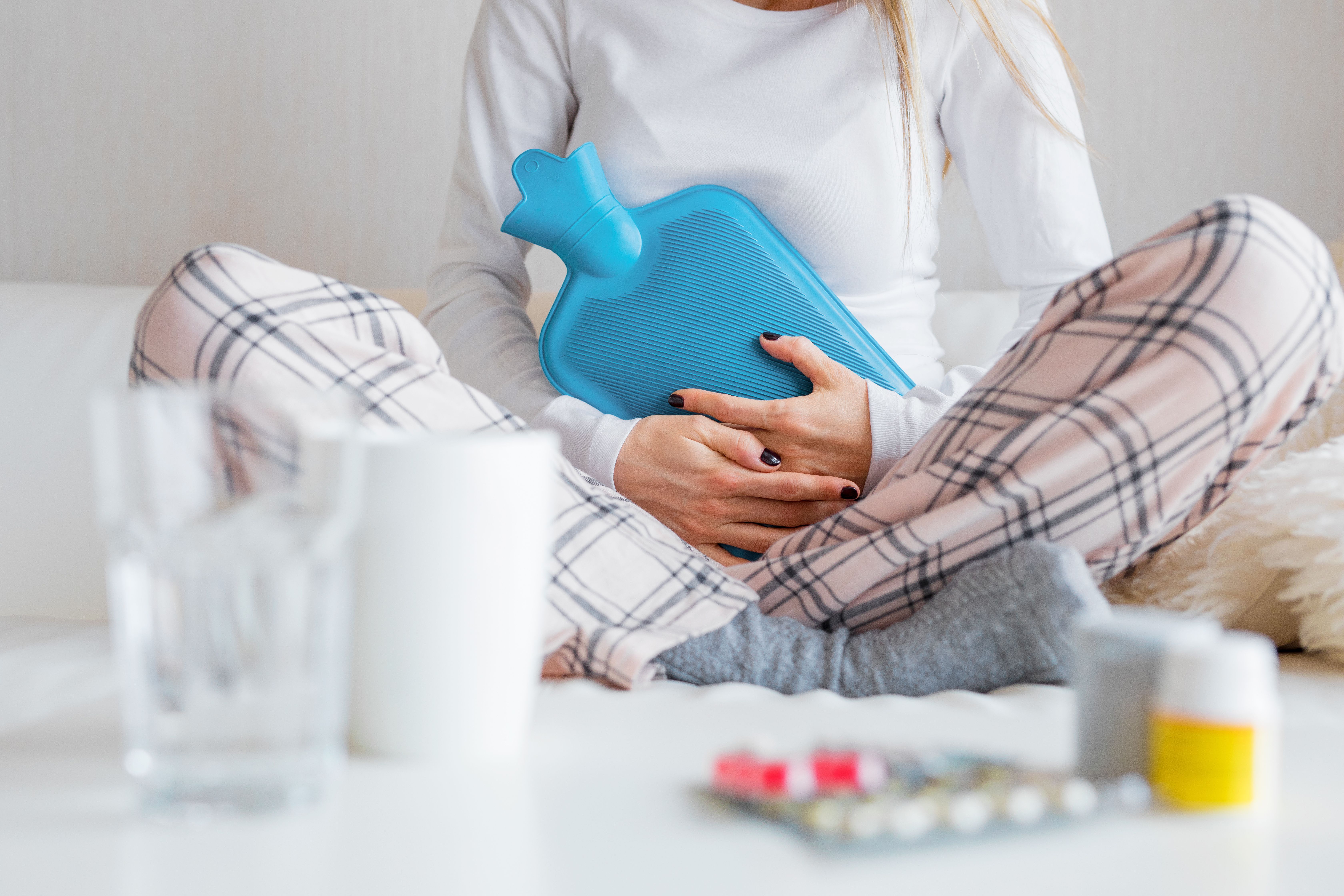Commentary
Article
Clinical Overview: Treatment Options for Premenstrual Syndrome (PMS)
Author(s):
Treatment options for individuals impacted with PMS can vary and include lifestyle modifications, medication treatments, and herbal products.
Up to 90% of women in the reproductive age range experience various premenstrual symptoms. These symptoms can be mild to severe, depending on the person and their body condition. Around 20% to 40% of these individuals experience premenstrual syndrome (PMS), and about 2% to 8% suffer from what’s called premenstrual dysphoric disorder (PMDD).¹
PMS is defined as a group of emotional, behavioral, and physical symptoms that appear around the end of the luteal phase and resolve with the beginning of menstruation, or right after it.
The vast majority of women, about 90%, report having premenstrual symptoms, such as bloating, headaches, and mood changes. Symptoms can be mild for some women and very severe for others. Severe symptoms can sometimes interfere with life activities, such as taking care of family members, going to work, going to school, and participating in other major activities. On average, women in their 30s are most likely to have PMS and associated symptoms.²
Image credit: Kaspars Grinvalds | stock.adobe.com

Physical symptoms of PMS may include tender breasts, constipation or diarrhea, bloating, cramping, headache, backache, clumsiness, and sometimes lower tolerance of noise or light. The emotional or mental symptoms may include being more irritable, feeling tired, having problems sleeping, appetite changes, more food cravings, trouble concentrating, having memory issues, anxiety, feeling depressed, sadness, mood swings, and lack of interest in sexual activity.²
The major cause of PMS is not known, but some known contributors include cyclic changes in the hormones, chemical changes in the brain, and depressive symptoms. Chemical changes in the brain, such as fluctuations of serotonin levels, can play a crucial role in mood states and triggering PMS symptoms.³
Treatment options for individuals impacted with PMS can vary and include lifestyle modifications, medication treatments, and herbal products. Some of the medication treatment options would include using antidepressants, such as fluoxetine (Prozac; Lilly), Paroxetine (Paxil; GSK), Sertraline (Zoloft; Viatris) and other selective serotonin reuptake inhibitors (SSRIs), through consultation with a provider.
When it comes to pain associated with PMS, nonsteroidal anti-inflammatory drugs (NSAIDs), can be helpful, especially when taken at the onset of the menstrual cycle or before. Some examples may include ibuprofen or naproxen, which can help alleviate generalized pain as well as the pain associated with cramping.
Diuretics can help with swelling and bloating symptoms, especially in those with excess fluid in their kidneys. One example is spironolactone (Aldactone; Zydus). Hormonal contraceptives can be used as other options for certain women to stop ovulation and relieve the symptoms of PMS.³
When it comes to herbal products, supplements, and OTC treatment options, there are many options that can be helpful for women going through PMS. Supplements may include calcium, magnesium, vitamin E, and vitamin B6 to sooth the symptoms of PMS. Ginko, ginger, chasteberry, evening primose oil, and St. John’s wort can be some of the options many choose to use to help with the symptoms.³ Certain fatty acids, including gamma-linoleic acid and alpha-linoleic acid, can have anti-inflammatory effects which can help the PMS symptoms. Gamma-linoleic acid can be found in the evening primose oil.⁶
A combination of oxaloacetate and vitamin C supplementation has also been studied and shown to alleviate depression, anxiety symptoms, and stress associated with PMS. Oxaloacetate is a type of energy metabolite that is found in every cell of the human body and plays a key role in the Krebs cycle within the mitochondria, which is key to proper cellular function, especially during PMS.⁴ Jubilance is one of the oxaloacetate brand names, which can be used for PMS symptoms relief, including those of psychological and behavioral symptoms.⁵
For many women, PMS and the associated symptoms can be frustrating, especially when experienced on a monthly basis. To combat these symptoms, many choose prescription medications, and some chose supplements and OTC treatment options to help alleviate the symptoms. Many of these supplements can be beneficial to relieve the PMS symptoms, with immediate results, and some may need to be taken for 3 to 6 months to work. All affected individuals should check with their health care provider on the best use of these prescriptions and OTC products, or a combination of them.
References:
1. Chumpalova P, Iakimova R, Stoimenova-Popova M, Aptalidis D, et al. Prevalence and clinical picture of premenstrual syndrome in females from Bulgaria. Ann Gen Psychiatry. 2020;19(3). doi:10.1186/s12991-019-0255-1
2. Premenstrual syndrome (PMS). US Department of Health and Human Services Office on Women’s Health. Updated February 22, 2021. Accessed November 6, 2023. https://www.womenshealth.gov/menstrual-cycle/premenstrual-syndrome
3. Premenstrual syndrome (PMS). Mayo Clinic. February 25, 2022. Accessed November 6, 2023. https://www.mayoclinic.org/diseases-conditions/premenstrual-syndrome/symptoms-causes/syc-20376780
4. Tully L, Humiston J, Cash A. Oxaloacetate reduces emotional symptoms in premenstrual syndrome (PMS): results of a placebo-controlled, cross-over clinical trial. Obstet Gynecol Sci. 2020;63(2):195-204. doi:10.5468/ogs.2020.63.2.195
5. How does Jubilance (oxaloacetate) relieve PMS mood swings? Jubilance. Accessed November 6, 2023. https://jubilance.com/how-it-works/
6. PMS Supplements: 7 Options for Mood Swings and Other Symptoms. Healthline. July 31, 2020. Accessed November 6, 2023. https://www.healthline.com/health/pms-supplements
Newsletter
Stay informed on drug updates, treatment guidelines, and pharmacy practice trends—subscribe to Pharmacy Times for weekly clinical insights.





